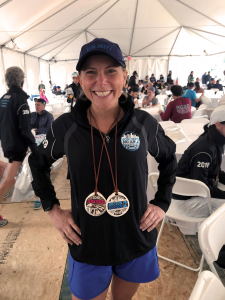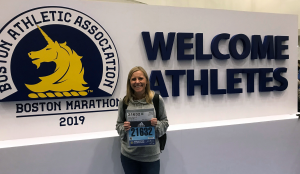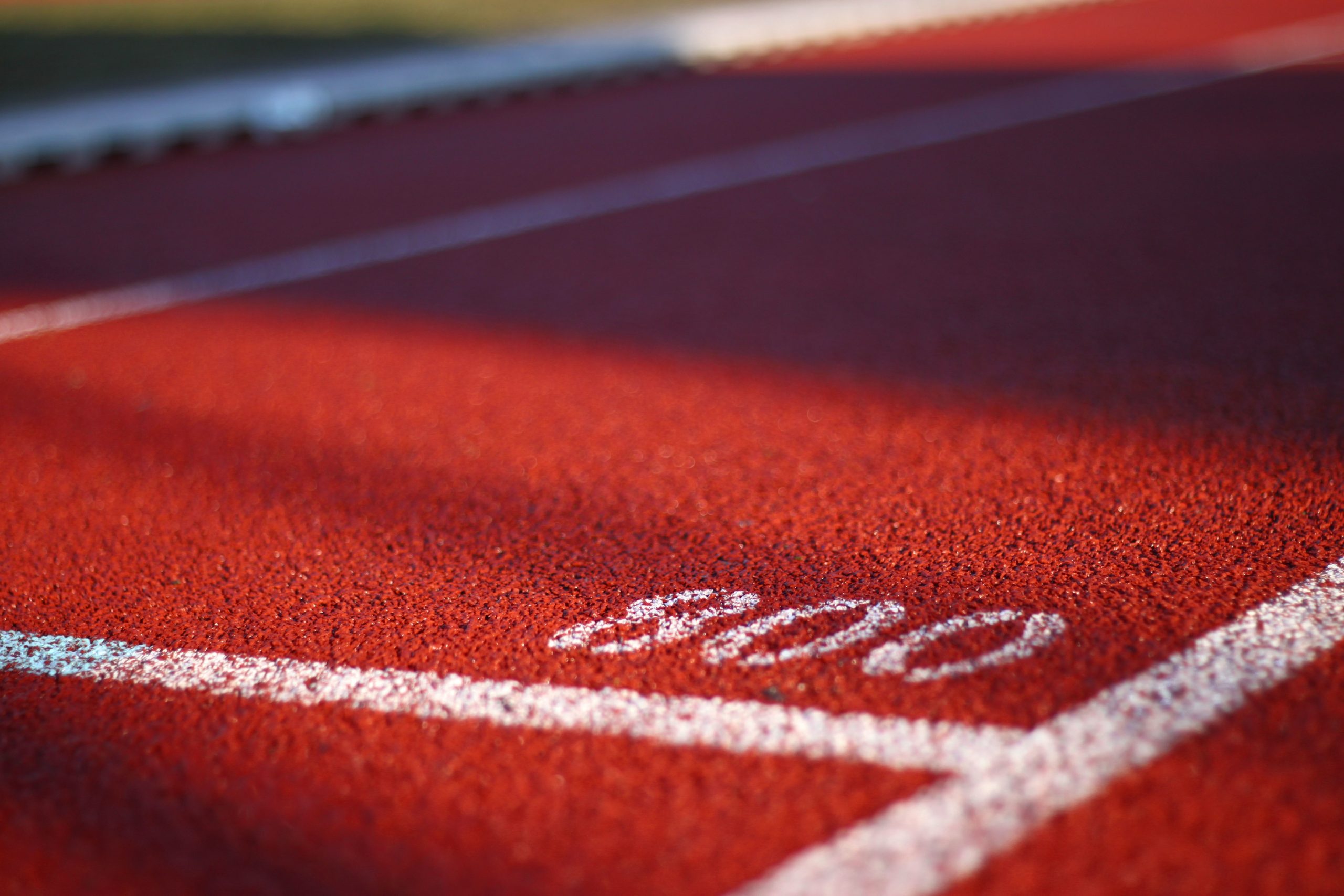Our team is competitive, not only in the world of computing, but also on the track.
This month, we sit down with one of our resident FCG marathon runners, Wendy T., to to get some insight into her recent success in completing the Boston 2 Big Sur Challenge this past April.
The Boston 2 Big Sur Challenge is a back to back marathon for qualifying runners to participate in the Boston Marathon and the Big Sur Marathon. Since the races are held within such a short time span of each other, participants only have 2 weeks to recover and recharge between, it is very difficult even for seasoned runners.

The Boston 2 Big Sur event is a major challenge even for an experienced runner like yourself, what motivated you to decide to participate in this event?
Both the Boston and Big Sur Marathons have been on my “to do list” for many years. Both races have different entry requirements. The Boston Marathon has a qualifying time requirement based on your gender and age and the Big Sur race is a lottery entry. I have been training for a Boston Qualifier (BQ) for years – but the requirement is pretty hard to meet. I finally obtained a qualifying time of 3:45:45 at the Philadelphia Marathon in 2017, meaning I would be eligible to run in the 2019 Boston Marathon!
I have been trying for years to obtain entry in the Big Sur Marathon using their lottery system. It is tough to get in as less than 10% of all entries are selected. However, during the summer of 2018 a friend was also entering the Big Sur lottery and asked if I wanted to be a part of her team lottery entry. Having never been selected, I knew the chances were slim. But it was our lucky year – we were both selected to run in 2019!
I was a bit nervous for the “back to back” marathons – since there was only 13 days between the evens. However, the toughest part of marathons is the training. I knew if I could have a solid training plan, reduce the chance of injury and use the 13 days in between races to recover, I could successfully complete the races.
For the “challenge” part of this race, the organizers of Big Sur offer 300 spots to runners who are running both races. We received special medals, a finisher jacket, and private tent event after the Big Sur race. It was great to be able to meet other runners from all over the world who also completed the challenge.
Are you used to the conditions included in these courses? What was it like for each course? Did the conditions present any difficulty or problems you had to prepare for differently (or keep in mind) than other marathons you have participated in?
The Boston Marathon is known for unpredictable weather conditions. You never know what New England will give you in April! It’s ranged from 80 degrees to freezing temperatures with strong winds. Being in Northern California, Big Sur is a bit more temperate. Race conditions there are usually perfect. However, since the race course is along California Highway 1, there can be some winds along the course.

As for physical conditions, both courses are pretty different. Both races are a “point to point”, meaning that you are bused to the start line, and must run back. That bus ride from the finish to the start is always a mental challenge – knowing that you need to run all the way back! Boston is a net downhill course, meaning the start is at a higher elevation than the finish. It has rolling hills throughout, which makes it challenging. The notorious “Heartbreak Hill” is also at mile 21 – right when your legs are about done! Big Sur also has its share of hills, including a 2 mile climb up to Hurricane Point.
As a runner, you pretty much need to be prepared for anything on race day. You never know how you will be physically feeling or what the weather is going to be, so flexibility in adjusting your plans based on the conditions is key.
Because of the increased difficulty in back to back events, what is one key element that you had to add to your regimen for training or had to change to ensure you were ready for the races (i.e. diet, running techniques, workout, etc.)?
My main goal was to stay healthy and try to stick to my training plan as close as possible. Since training began in January and Maryland winters can be unpredictable, I was really hoping for a mild winter so I could do as many runs outside as possible. I also tried to build in more strength and core work into this training cycle.
What advice would you share for others interested in a high endurance challenge such as this one?
My biggest piece of advice is to listen to your body. For any type of physical activity, it is critical to keep everything in working order. There were a few days during this training cycle that I didn’t feel up to running. I always say that it is better to go into an even undertrained than injured.

We’re excited to know, what’s your next running challenge?
For the rest of this year, I am going to focus on shorter race distances. I have a half marathon in November which I really want to race well. I have never focused on racing half marathons – I have always just used them as conditioning races for full marathons. I have a time goal I want to run the November half in…so we will see what happens!
